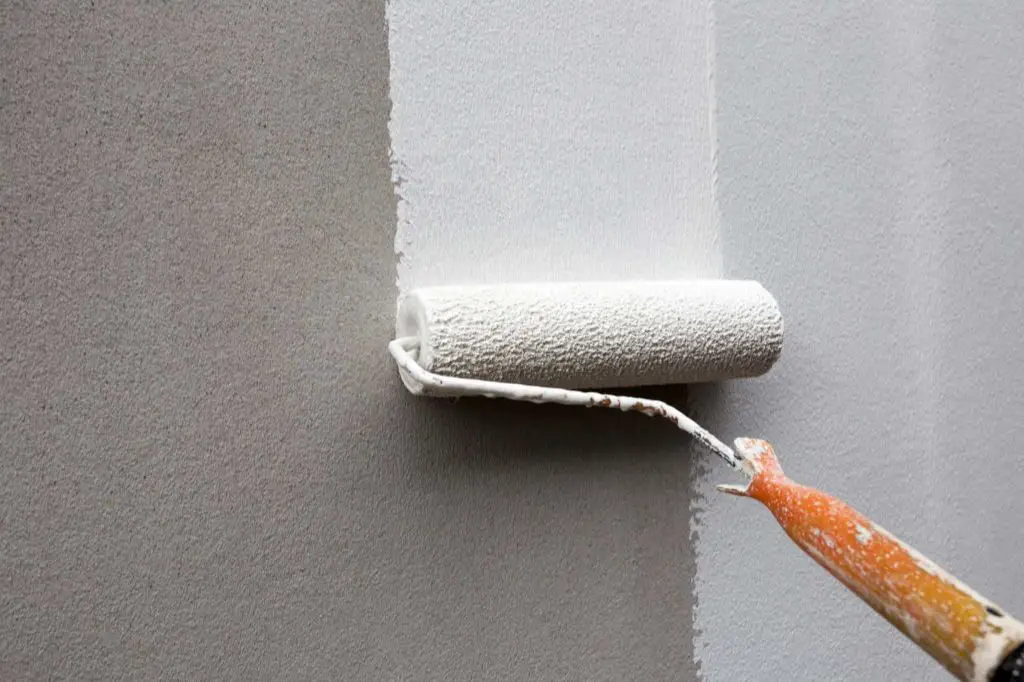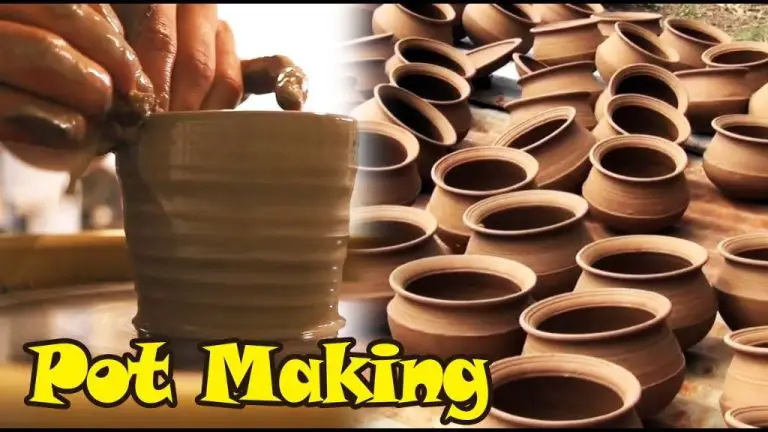What Roller Do You Use For Textured Walls?
Types of Textured Walls
There are several common types of textured walls to consider when choosing a roller:
Orange Peel Texture
Orange peel texture has a mottled, bumpy look resembling the skin of an orange. It has rounded indentations that create shadows and visual interest. Orange peel texture is one of the most popular textured wall finishes.
Knockdown Texture
Knockdown texture is applied by troweling on a heavy coat of joint compound or plaster and then knocking it down to flatten high points. This leaves grooves and valleys in the surface. Knockdown has a rustic, handcrafted look.
Popcorn Texture
Popcorn texture, also called cottage cheese or splatter texture, has a bumpy, irregular look. It’s created by spraying dots of compound onto the wall and leaving them rounded. Popcorn texture provides acoustic insulation.
Skip Trowel
With skip trowel texture, joint compound is applied with broad, arcing strokes of a trowel. This leaves ridges of various heights across the surface for dramatic shadows and definition.
Purpose of Texture
There are several reasons why homeowners and professionals add texture to walls:
First, texture helps hide imperfections in drywall like seams, nails, and patches by disguising uneven surfaces through visual disruption. The textured finish helps conceal flaws for a more uniform look.
Second, texture adds visual interest and aesthetic appeal to what would otherwise be blank, flat walls. The extra dimension creates a more dynamic look and feel. Different texture styles like knockdown, orange peel, or skip trowel each have their own unique appearance.
Third, texture impacts sound quality in a space. The contours created absorb sound rather than reflecting it, helping improve acoustics. A textured finish softens echoes and excessive reverberation for a warmer ambiance.
Rollers for Orange Peel Texture
Orange peel texture creates a stippled pattern on walls and ceilings that resembles the surface of an orange peel. This subtly bumpy texture helps hide imperfections and provides visual interest. Applying it requires using the right roller.
For orange peel texture, a short nap roller is recommended. The short fibers allow the texture material to be applied in a thin, even coat. A short 1/4″ or 3/8″ nap is ideal. Using a roller with longer nap may apply the texture too thickly.

The roller material should also be somewhat soft and flexible. Foam rollers tend to work very well for orange peel texture as they can compress slightly to stipple the texture evenly. Firm surfaces like traditional fiber or microfiber rollers may leave an uneven finish.
Prep work is important prior to rolling on orange peel texture. The wall should be clean, dry, and primed. Using painter’s tape to mask off edges helps keep the texture neat and minimize cleanup. Working in small sections to maintain a wet edge will also give the best results.
Rollers for Knockdown Texture
Knockdown texture creates an appealingly irregular surface pattern on walls and ceilings. This look is achieved by spraying the wall with texture, then using a wide drywall knife or trowel to flatten the high points while leaving some texture behind. When painting knocked-down walls, you’ll want to choose the right roller to apply the paint smoothly and evenly without disrupting the texture.
For painting over knockdown texture, a medium nap roller cover between 1/2″ and 3/4″ nap is recommended. The slightly longer nap helps apply paint into the valleys of the texture evenly. Meanwhile, the medium density helps smooth the paint without pulling too much texture off the high points. Lambswool roller covers are ideal for painting knockdown walls. The soft woven fabric smoothly glides over the textured surface.
Make sure to work methodically and avoid pressing too hard as you roll to prevent damaging the texture. Use light, even strokes and roll in the same direction throughout the wall. With the right prep work and tools like a medium nap lambswool roller, you can end up with beautifully painted knockdown walls.
Rollers for Popcorn Texture
Popcorn texture is one of the most popular styles for textured walls. It provides a bumpy, stippled effect that helps hide imperfections in the drywall. When applying popcorn texture, you’ll need the right roller to get an even, consistent finish.
The most common roller used for popcorn textures is a special popcorn roller. These rollers have a thick, porous pad that helps pick up and release the popcorn texture material evenly onto the wall. The porous material also helps prevent clogs that can happen with standard nap rollers (https://www.drywallrepairman.com/wall-ceiling-texture-application-repair-vancouver/).
Popcorn texture can also be applied using a hopper gun. The popcorn material is fed through the hopper gun which sprays it onto the wall to create the bumpy texture. Using a hopper gun allows you to cover large areas quickly. However, it does take practice to get an even application and avoid heavy buildup in some spots (https://drywall101.com/articles/taping/popcorn-texture-removal).
When using either a popcorn roller or hopper gun, be sure to protect nearby surfaces from overspray. Apply the texture in a circular motion for even coverage. Allow popcorn texture to fully dry before painting or priming.
Rollers for Skip Trowel
A skip trowel texture is created by using a trowel to apply texture compound or plaster in a random pattern. The trowel skips across the surface, leaving behind ridges and valleys of varying heights.
Two main types of trowels are used to achieve the skip trowel effect:
- Decorative trowel – This trowel has a wavy or notched blade that creates ridges when pulled across the surface. The repetitive pattern left behind produces a very stylized look.
- Finishing trowel – A standard smooth, flat finishing trowel can also be used in a random skipping motion to produce irregular ridges and grooves. This creates a more natural, hand-worked appearance.
Applying skip trowel texture takes some skill and practice to get the technique right. It’s important to keep the trowel at a consistent angle and use the right pressure to get the desired ridge heights. The look can range from subtle to very pronounced.
No rollers are used in the skip trowel process itself. The trowels are the main tools that create the ridges. However, a lightly textured roller may be used after to gently knock down any sharp edges and blend the texture.
Choosing Roller Nap Length
When choosing a roller nap length for textured walls, the general rule is that shorter nap lengths are better for smooth surfaces, while longer nap lengths are optimal for thicker texture.
For lightly textured walls, a 1/2-inch nap roller is typically recommended. This provides enough depth to work the paint into the texture properly.
For heavier knockdown textures, a longer 3/4-inch or 1-inch nap is better to ensure full coverage. As the texture gets deeper and more pronounced, the nap length should increase accordingly.
The most heavy duty textured walls like popcorn and skip trowel may require an extra long 1-1/2 inch or 1-3/4 inch nap roller to penetrate deeply enough.
Always test a small area first when choosing a nap length, as the optimal size can vary depending on the specific depth and style of the texture.
Roller Material
When choosing a roller material for textured walls, you’ll typically have two main options – synthetic or lambswool. Synthetic rollers are made from nylon or polyester while lambswool rollers are made from natural wool fibers.
Synthetic rollers tend to be more durable and last longer than lambswool. They can withstand more use before needing to be replaced. Synthetic fibers are also less prone to shedding than natural fibers. This makes synthetics a good choice for heavier texturing jobs.
Lambswool rollers tend to be a bit softer and may apply certain textures more evenly. However, they don’t hold up as well over time. The natural fibers can shed more, especially when applying thicker substances like heavy paints or texturing materials. Lambswool rollers also tend to be more expensive than synthetic options.
For most texturing projects, a durable 3/4″ or 1″ synthetic roller will provide the best results for a reasonable price. The texture material can be worked well into the synthetic fibers to create an even finish. Lambswool rollers may be preferred for very delicate textures, but the added cost and upkeep required make synthetics the best choice in most cases.
Prep Work
Before applying texture to walls, it’s important to properly prepare the surfaces. This involves a few key steps:
First, clean walls thoroughly to remove any dust, dirt, grease or grime. Use a degreasing cleaner and rinse with clean water to ensure surfaces are free of contaminants (source).
Next, repair any imperfections in the walls like chips, cracks or holes. Use drywall joint compound or lightweight spackle to patch and smooth flaws so they don’t show through the texture (source).
Lastly, protect any floors, furniture or baseboards from potential splatter using plastic sheeting or drop cloths. Tape down coverings securely and close off any vents or outlets before starting to apply texture.
Taking time to properly prep surfaces will ensure the texture adheres evenly and lasts.
Applying Texture
When applying a textured paint or coating to walls, proper application technique is crucial for achieving an even finish. Here are some tips for applying roll-on wall texture:
Load the roller evenly by rolling it back and forth in the paint tray so it is fully saturated without dripping. According to https://www.thespruce.com/hide-flaws-with-stipple-texture-4121027, dipping the roller in the paint tray and then rolling it out prevents excess buildup on the roller.
Maintain a wet edge as you work by overlapping your strokes and working in sections. Work quickly and avoid going over areas that have dried.
Backroll over each section once completed to blend and even out the texture. Lightly roll over the area vertically and/or horizontally.
Allow the textured coating to fully dry before adding additional coats. Drying times vary based on humidity, temperature, and thickness applied.

